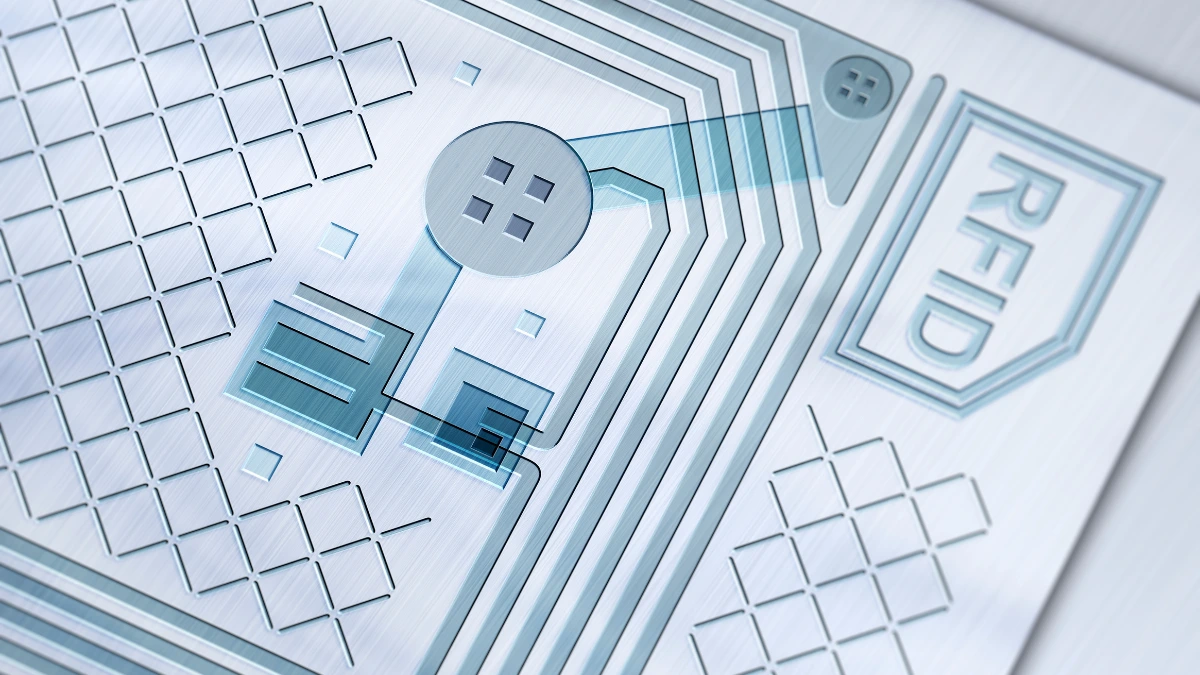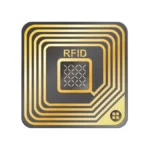After you know the use of RFID in everyday life, it’s time to get to know more about the RFID system.
RFID Inlays, RFID tags, and RFID Labels are the 3 components that form the core of your RFID system.
Of the 3 components that make up an RFID system, there are slight physical and functional differences between them.
Also Read
This article discusses the meaning of RFID inlays, RFID tags, and RFID labels which form the core of an RFID system.
Table of Contents
RFID Tag Components
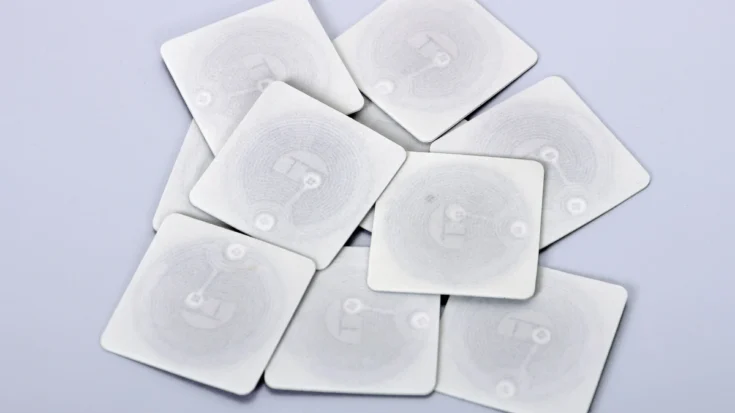
RFID tags consist of an integrated circuit (IC), antenna, and substrate. To help you understand all the differences between tags, inlays, and labels, we will define the parts of an RFID tag below:
- Integrated circuit: This part is also known as an RFID chip. This is part of the tag that is responsible for storing, handling, and processing data.
- Antenna: This part receives radio waves from the interrogator and sends data back to the reader. It takes up the largest space.
- Substrate: The substrate is the material that holds the IC and tag antenna together.
- Face: The face is a thin layer made of clear/white plastic or paper. It is used to cover the antenna and chip.
- Encasement: Refers to the covering that encloses the IC, antenna, and substrate. It is made from PET, plastic, or paper.
- Adhesive: Refers to the material used to attach tags to items.
Definition of RFID Inlays, Tags, and Labels
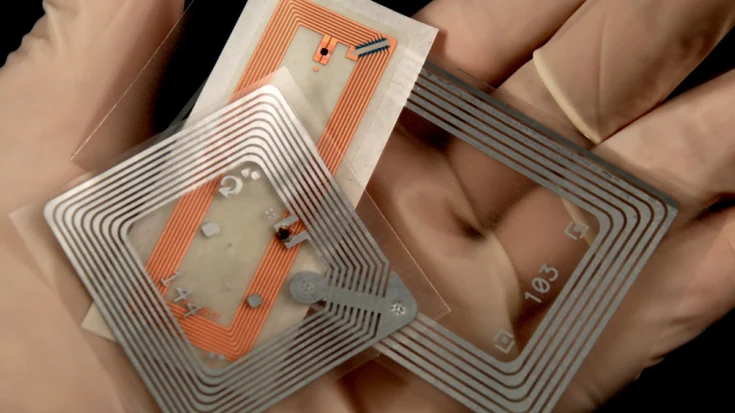
1. RFID inlays
RFID inlays consist of integrated circuits, antennas, and substrates. The antenna is made of aluminum, silver, and copper, and bonded to polyethylene terephthalate (PET). PET can be wet or dry.
Wet Inlay RFID. This inlay has a surface that contains adhesive. This feature gives them a peel-and-stick effect, making them relatively easy to apply.
Dry inlays. This inlay has no retainers. Therefore, you should use external adhesives or other substances that can help you stick it to the asset.
RFID inlays are relatively affordable and easy to use. For inlays, the substrate/PET is made of clear/transparent plastic.
2. RFID labels
An RFID label contains all the tag elements. Just like an RFID inlay, the label includes the antenna, chip, and substrate. They are also called smart labels.
RFID labels are RFID inlays embedded in paper. This is an ideal method for tracking products during shipping.
3. RFID tags
This refers to the encapsulated RFID chip and antenna. Encapsulation is intended to protect tag components and ensure ease of application.
RFID tags can be active or passive. The active one is equipped with a battery, which guarantees a relatively wider reading range. Passive ones, on the other hand, rely on a signal from the reader to power on.
The Difference Between RFID Inlays, Tags, and Labels
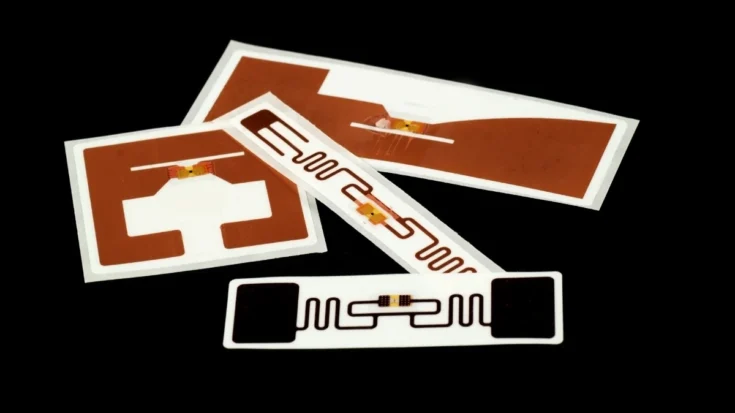
While RFID inlays, tags, and labels serve the same fundamental purpose, they differ in design and application.
- RFID Inlays – These are similar to RFID tags but consist only of a chip and an antenna, making them smaller in size. Inlays are typically embedded into another object, such as a label, card, or material. They can be either active or passive and generally have a shorter read range compared to RFID tags.
- RFID Tags – These compact devices contain a chip for data storage and transmission along with an antenna. They are typically attached to or integrated into items that need tracking, such as retail products or supply chain assets. RFID tags can be read from several meters away and can be either active (requiring a battery) or passive (operating without one).
- RFID Labels – Similar to inlays, RFID labels have an added printed surface where barcodes, text, or graphics can be displayed. They are widely used in industries such as healthcare, retail, and logistics for marking and tracking items. RFID labels can be active or passive, with a read range varying from short to medium distances.

